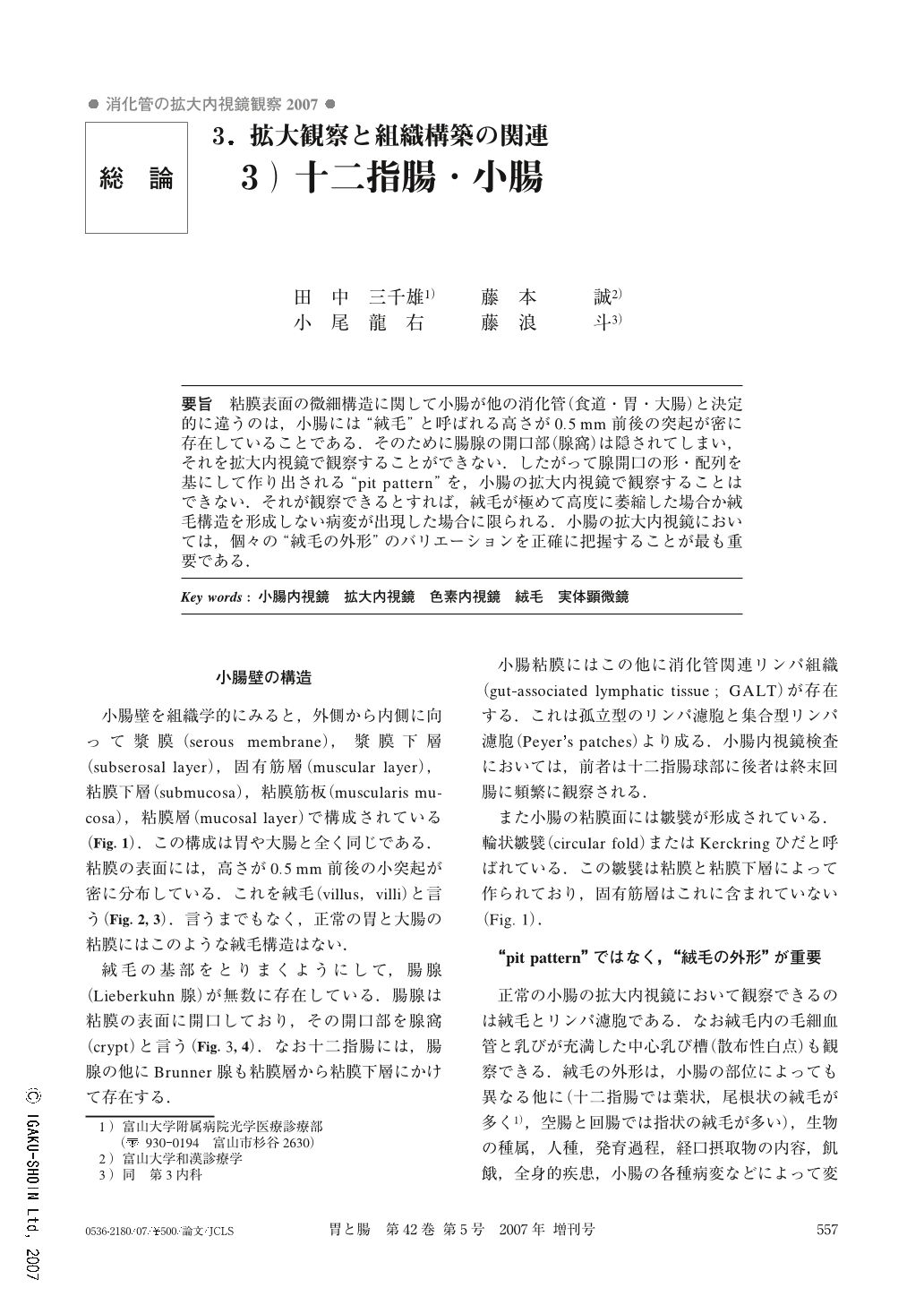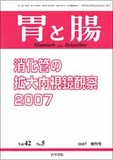Japanese
English
- 有料閲覧
- Abstract 文献概要
- 1ページ目 Look Inside
- 参考文献 Reference
- サイト内被引用 Cited by
要旨 粘膜表面の微細構造に関して小腸が他の消化管(食道・胃・大腸)と決定的に違うのは,小腸には“絨毛”と呼ばれる高さが0.5mm前後の突起が密に存在していることである.そのために腸腺の開口部(腺窩)は隠されてしまい,それを拡大内視鏡で観察することができない.したがって腺開口の形・配列を基にして作り出される“pit pattern”を,小腸の拡大内視鏡で観察することはできない.それが観察できるとすれば,絨毛が極めて高度に萎縮した場合か絨毛構造を形成しない病変が出現した場合に限られる.小腸の拡大内視鏡においては,個々の“絨毛の外形”のバリエーションを正確に把握することが最も重要である.
The definite difference between the architecture of the mucosal surfaces in the small intestine and other gastrointestinal organs (esophagus, stomach and large intestine) is that only the small intestine has minute mucosal projections called villi. Villi disturbe endoscopic observation of the intestinal gland orifices which are called crypts of Lieberkuhn.
Therefore, observation of “pit pattern”, which is formed by the shape and arrangement of crypts, is generally impossible by means of magniying endoscopy. Only a very high grade of villous atrophy or small intestinal lesions without villous artitecture allow observation of “pit pattern”.
In enteroscopy combined with magnifying endoscopy, the most important finding is the shape of villi.

Copyright © 2007, Igaku-Shoin Ltd. All rights reserved.


